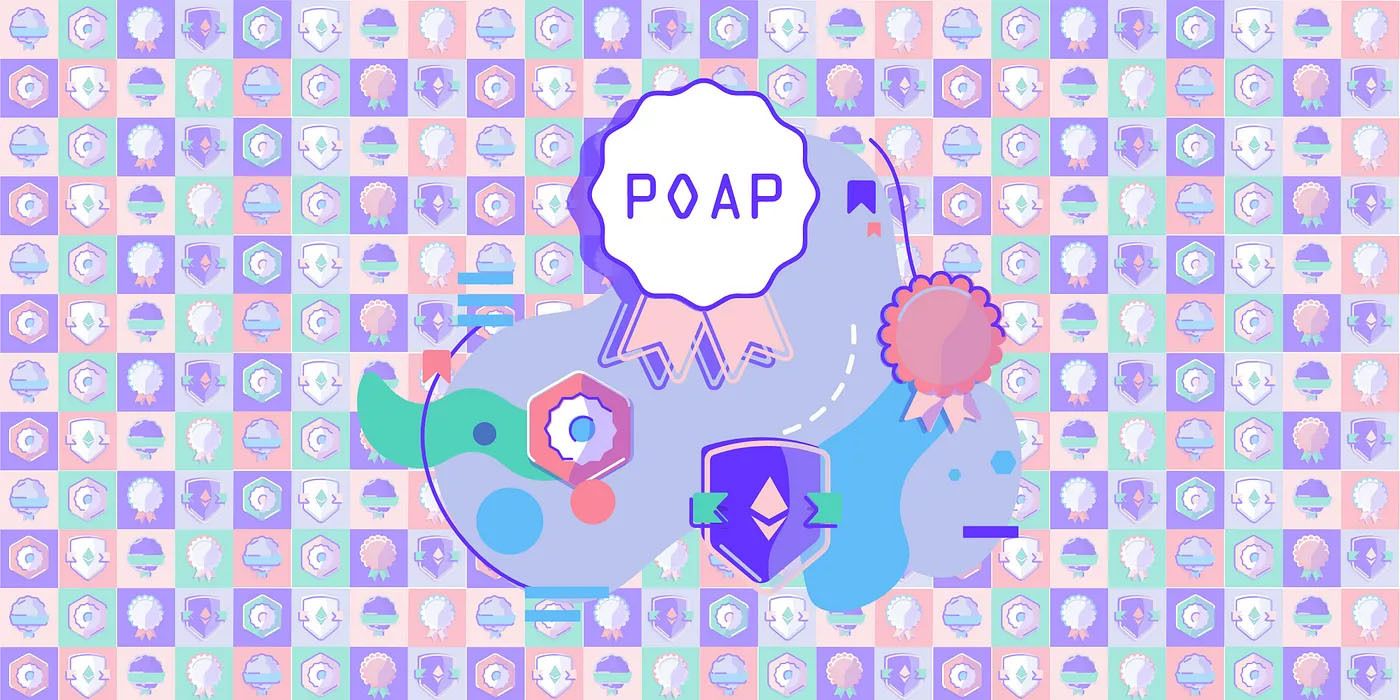

Proof Of Attendance Protocol - POAP
The short answer to the question is yes and one of the ways to make that possible is via the Proof of Attendance Protocol, in short POAP.
Let’s dive into this concept in detail.
What is a POAP?
In the most generic way, a POAP is a worthy record of experiences that happen in real life. A POAP allows us (humans) to collect badges or participate in an activity or perform an instructed action or activity virtually or in person, depending upon the requirement.

Historically the first POAP was created in 2019 at the ETH-Denver Crypto Conference. It was used to reward hackers who were attendees and participants in a hackathon event.
Technical Aspects of a POAP
A POAP is an ERC-721 (ERC: Ethereum Request for Comments) token that is minted via a smart contract as an NFT. These NFTs are based on the Ethereum (ETH) blockchain and the POAP is inside a user’s wallet.
These tokens are created as physical proof of celebrating and recording the attendance of an event on the blockchain. Since the ETH blockchain is slow and heavily loaded, a decision was taken to migrate the POAP to the Ethereum sidechain xDAI, in October 2020, as it is faster and cheaper in terms of transaction fees (gas fees).
Hence, saving people a lot of money and allowing them to mint it cheaply. Since POAP is fundamentally an NFT it can be used like other NFTs which means that it can be traded, transferred to others or even burned (destroyed).
Working of a POAP
A POAP acts as a bragging right for a holder as it is an exclusive ticket to a major event. Holders can display their POAPs for showing events, communities, and groups that they are a part of. Ideally, an occurrence of an event signals the start of something remarkable.
Furthermore, a POAP also acts as a raffle ticket and gives the users access to raffles where they can win almost anything as decided by the community.

Even though it is on the blockchain, a POAP preserves no personal information like the name, phone number, etc of the holder. It only shows the anonymous name and the ETH wallet address where the NFT currently is.
This move alone makes it a reliable source for data privacy. Just like an NFT a POAP too can be owned by a single person or a group. A collection of many POAPs indicate the holder’s commitment to the project or the community. Similar POAPs in a user’s wallet show what projects are the holder’s personal favourites and where they intend to go in the future.
POAPs are also visual proof showing how many people attended an event or performed a specific required action.
The NFT minting of POAPs takes place on the official POAP platform. A POAP must contain all the relevant information about the event where the metadata includes the specific date and time along with an image that equates the POAP to the community or the event.
Furthermore, every POAP also has a unique serial number which is also included in its metadata.
How can POAPs be used? What are the NFT Utilities?
As per the POAP team, the initial use of POAPs was to showcase the heights Ethereum can soar to and for crypto enthusiasts to prove their commitment to Ethereum “before it was cool.” Today, although low in monetary value, they serve as a great community engagement tool.
The low monetary value is compensated by the fact that they are limited in supply and have therefore become “highly prized collector's” items. They also give the organizers the ability to interact with their community thereby growing it and “making it cool.”
There’s also a POAP leaderboard that displays user rankings based on the number of events they have been a part of, the tasks they have completed, and also the number of POAP NFTs they hold. The ranking list may vary from one project or community to another.

Another cool feature of owning a POAP NFT is the ability to draw on a shared canvas using the POAP.art website. Here the canvas features live forms of digital art which again furthers community engagement and helps the project grow.
Depending on the project owning a POAP NFT may even bring in free gifts or cool surprises via airdrops.
In the past SushiSwap airdropped POAPs to the people who attend their AMA (Ask Me Anything) and also to those who voted for DEXs (Decentralised Exchange) governance proposals.
The popular metaverse project Decentraland (MANA) also gave away POAPs for attendees who virtually attend an event taking place inside their own metaverse.
Another projected use of POAPs can also be to serve as a better alternative for managing subscriptions. This would bid adieu to the long mailing lists and allow the event organizers to be more direct and personal with their audience.
This would also ensure greater reach and more engagement in the community benefiting long-term relationships.
Conclusion:
Much like the entire crypto space, the concept of POAP is extremely new. Being only a little more than (at the time of writing) a couple of years old the concept is only known to early investors and still lacks awareness by the masses.
It is also important to note that Ethereum is no longer the only blockchain where NFTs exist.
As the world sees the rise of different blockchains (Solana, Avalanche for example) and NFT projects built on them, we may see a rise in awareness and interest in the POAP concept.
Since the space is evolving daily, it may not be surprising to see a better protocol than POAP emerging, as was seen in the past during the emergence of proof of history.
It is tough to comment on what might happen to POAP in the future but a use case beyond events and attendance will definitely boost it up.
(Click Here To Learn about The Fall of Luna Terra)
